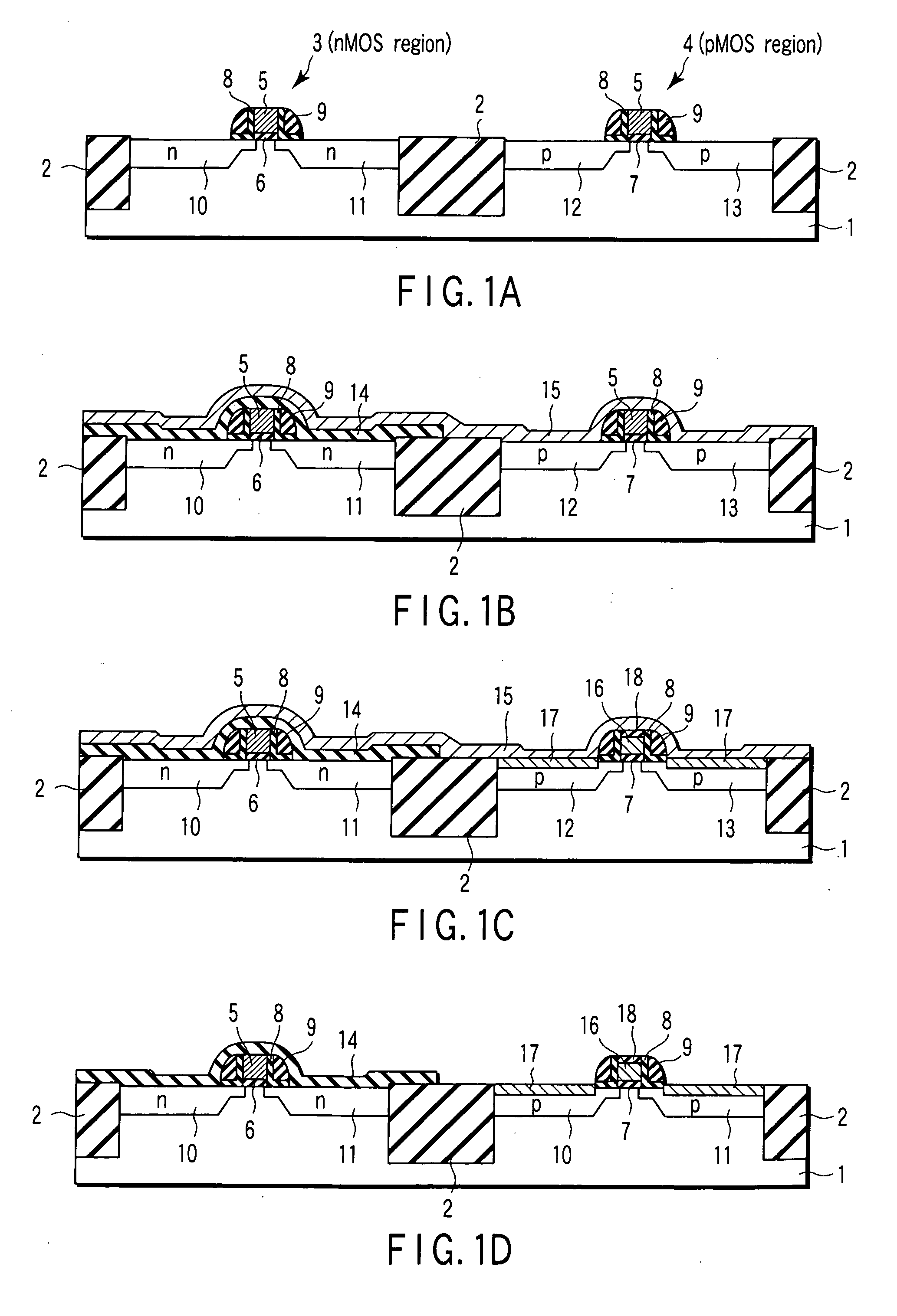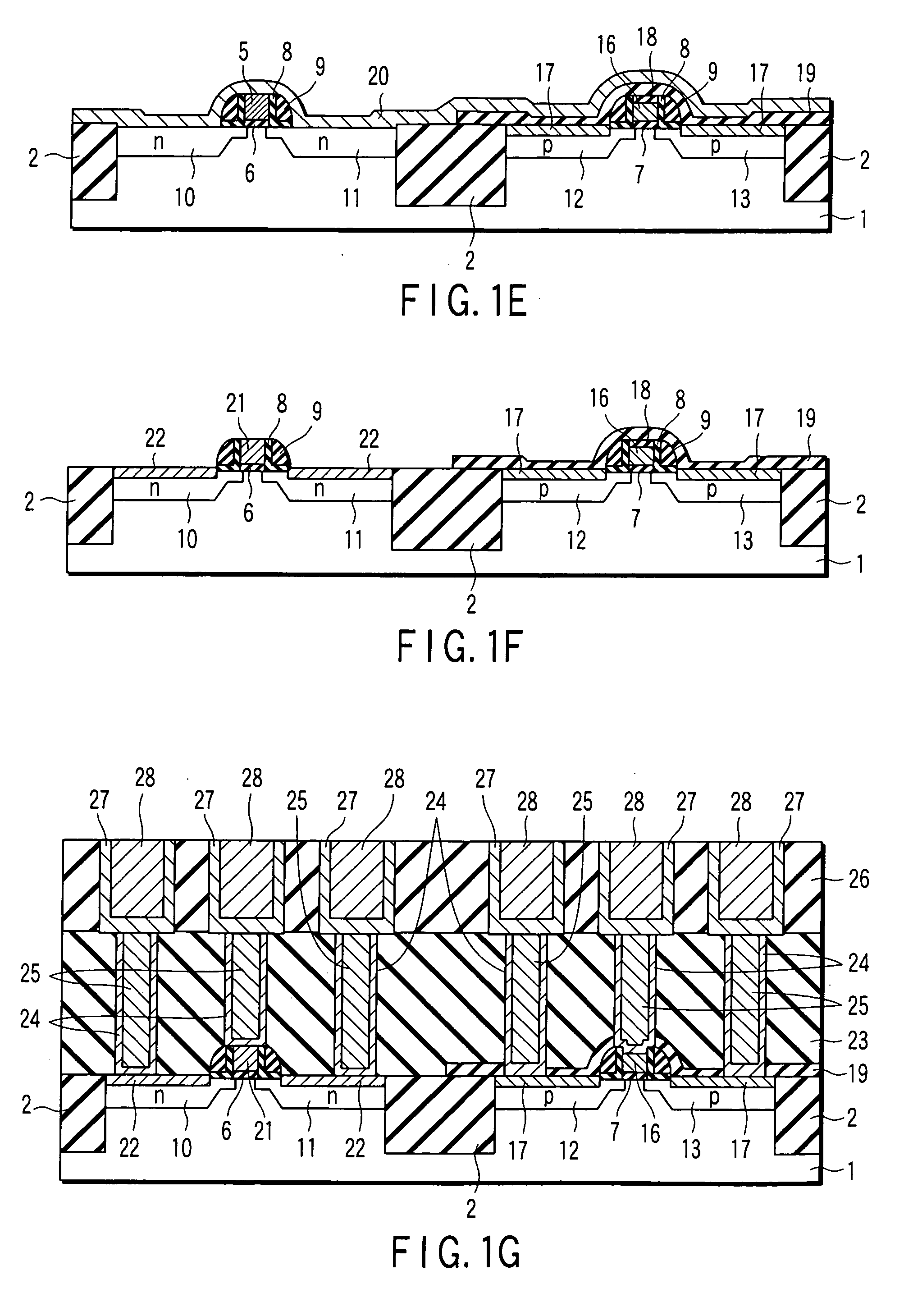Method of manufacturing semiconductor device
- Summary
- Abstract
- Description
- Claims
- Application Information
AI Technical Summary
Problems solved by technology
Method used
Image
Examples
example 1
[0056]FIGS. 1A to 1G are cross-sectional views each showing the steps of manufacturing a CMOS transistor in Example 1, and FIGS. 2A to 2F are longitudinal sectional views of gate electrodes shown in FIGS. 1A to 1F.
[0057] First, by forming an element isolator 2 on a single crystal silicon substrate 1 as shown in FIGS. 1A and 2A, the surface of the single crystal silicon substrate 1 was isolated into a plurality of an n-MOS region 3 and a p-MOS region 4. Then, a gate insulating film such as a silicon oxynitride film was formed on the single crystal silicon substrate 1 located in the n-MOS region 3 and the p-MOS region 4 respectively, and a polycrystalline silicon film was deposited all over the surface. Subsequently, the polycrystalline silicon film was etched anisotropically using a resist pattern as a mask to form a plurality of electrode patterns 5. The silicon oxynitride film is removed by etching selectively using these electrode patterns 5, whereby gate insulating films 6 and 7...
example 2
[0065]FIGS. 3A to 3H are cross-sectional views each showing the steps of manufacturing a CMOS transistor in Example 2.
[0066] First, by forming an element isolator 32 on a single crystal silicon substrate 31 as shown in FIG. 3A, the surface of the single crystal silicon substrate 31 was isolated into a plurality of an n-MOS region 33 and a p-MOS region 34. Then, a gate insulating film such as a silicon oxynitride film was formed on the single crystal silicon substrate 31 located in the n-MOS region 33 and the p-MOS region 34 respectively, and a polycrystalline silicon film and a silicon oxide film were deposited successively all over the surface. Subsequently, the silicon oxide film was etched anisotropically using a resist pattern as a mask to form a plurality of silicon oxide patterns 35. The polycrystalline silicon film underneath the silicon oxide pattern was etched anisotropically using these silicon oxide patterns 35 as a mask, whereby a plurality of electrode patterns 36 were...
PUM
 Login to View More
Login to View More Abstract
Description
Claims
Application Information
 Login to View More
Login to View More - R&D
- Intellectual Property
- Life Sciences
- Materials
- Tech Scout
- Unparalleled Data Quality
- Higher Quality Content
- 60% Fewer Hallucinations
Browse by: Latest US Patents, China's latest patents, Technical Efficacy Thesaurus, Application Domain, Technology Topic, Popular Technical Reports.
© 2025 PatSnap. All rights reserved.Legal|Privacy policy|Modern Slavery Act Transparency Statement|Sitemap|About US| Contact US: help@patsnap.com



